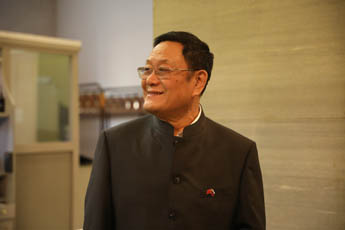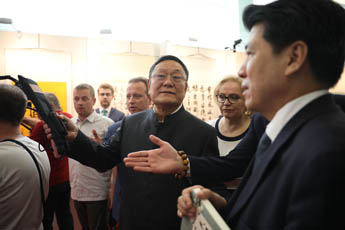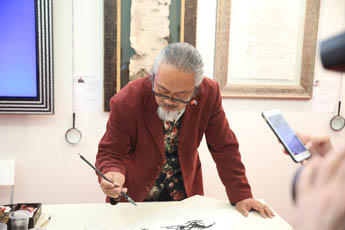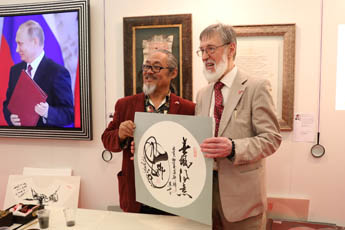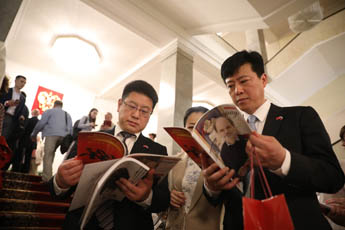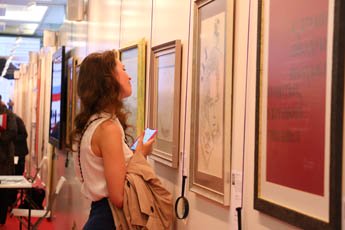Great Russian and Chinese Calligraphy exhibition opens in State Duma
On May 28 the Federal State Duma of the Russian Federation held a landmark opening ceremony for a remarkable cultural event celebrating the 70th anniversary of establishing diplomatic relationship between Russia and China – The Great Russian and Chinese Calligraphy exhibition. The centrepiece of the exhibition is the Handwritten Constitution of the Russian Federation – the art of calligraphy didn’t leave out the main state legislation that guides everyday activities of the Russian lawmakers. No less important is the calligraphy support to the interaction between the two neighbours and strategic partners – Russia and China.
Many guests of special importance from Russia and China attended the ceremony. The honorary right to open the exhibition was entrusted to Mr. Li Hui, the Ambassador Extraordinary and Plenipotentiary of the People’s Republic of China to the Russian Federation, who supported the event aimed at the cultural dialogue between two countries, and thanked its organizer, Director of the Contemporary Museum of Calligraphy, Alexey Shaburov
The guest list of the ceremony included Mr. Li Hui, the Ambassador Extraordinary and Plenipotentiary of the People’s Republic of China to the Russian Federation; Vyacheslav Nikonov, Chairman of the State Duma Committee for Education and Science; Lyubov Dukhanina, Deputy Chairman of the State Duma Committee for Education and Science; Leonid Slutsky, Chairman of the State Duma Committee for International Affairs; Alexey Chepa, Deputy Chairman of the State Duma Committee for International Affairs and coordinator of the deputy group for Chinese Parliament; Georgiy Zinoviev, Director of the First Asian Department of the Russian Ministry of Foreign Affairs; Alla Manilova, State Secretary and Deputy Minister of Culture of the Russian Federation; Sergey Gavrilov, Chairman of the State Duma Committee for Society Development, Non-Governmental and Religious Associations; Sergey Sorokin, the First Deputy Governor of Novgorod region and Chief Officer of the regional Novgorod administration; Vitaly Monkevich, President of the Russian Asian Union of Industrialists and Entrepreneurs; a guest from Kazakhstan – Zhandos Boldykov, Director of the National Centre for Manuscripts and Rare Books of the Ministry of Culture and Sport in the Republic of Kazakhstan; Valentina Orlova, Chairman of the Board of the World Club of Saint Petersburgers; Petr Suspitsin, General Director of the Rare Book from Saint-Petersburg publishing house; Petr Chobitko, calligraphy artist, President of the National Union of Calligraphers, and member of the Union of Artists of Russia; Yuri Koverdyaev, calligraphy artist and member of the Professional Union of Artists of Russia; Ms. Gong Jiajia, the Cultural Advisor of the Embassy of China in Moscow and Director of the Chinese Cultural Centre in Moscow; Ms. Wang Rui, the 2nd Secretary of the Embassy of China; a delegation from Shanghai led by Ms. Jing Ying, the Deputy Chief Officer of the Foreign Affairs Office of Shanghai government; a delegation of the Chinese calligraphy association “Sharp-pointed Nibs” led by Deputy Chairman Mr. Li Bin and Executive Director Mr. Xiong Jieying; Mr. Zhao Xueli, Director of the Academy of Calligraphy and Painting at the Chinese People’s Political Consultative Conference in Heilongjiang province, and member of the All-Chinese association of calligraphers; Mr. Wang Yafeng, President of the Chinese Academy of Cinema and Television, and calligraphy artist; Mr. Zhang Guoliang, Chairman of Zhang Hai foundation; Mr. Luan Shaohu, Chairman of the Board of legal firm DHH, and many more.
The speeches emphasized the importance of the cultural dialogue between Russia and China, and stressed that the Great Russian and Chinese Calligraphy exhibition promotes the cultural rapport and further development of friendship.
The exhibit sparked enormous interest with approximately 1000 visitors on day one. The contents of the exhibition carry several important cultural messages uniting Russian and Chinese art – wisdom, patience, respect towards your own history and culture. The unique calligraphy artworks on display provide an opportunity to think about the importance of preserving the traditional writing and calligraphy not only as an object d’art but as an important tool that helps every new generation continue to cherish its alphabet and strive to personal development.
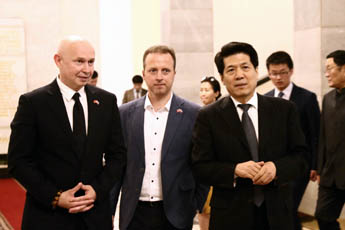
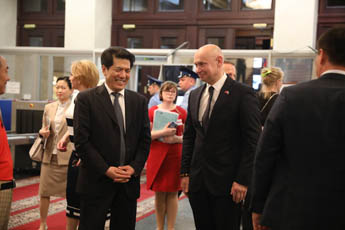 Alexey Shaburov, organizer of the exhibition, and Li Hui, the Ambassador Extraordinary and Plenipotentiary of the People's Republic of China to the Russian Federation
Alexey Shaburov, organizer of the exhibition, and Li Hui, the Ambassador Extraordinary and Plenipotentiary of the People's Republic of China to the Russian Federation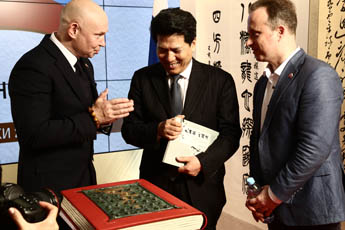
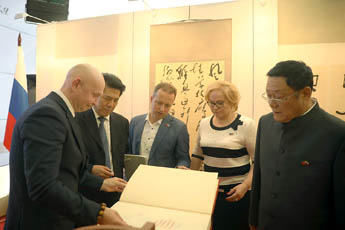 Mr. Li Hui got acquainted with the unique book "Thirty-six stratagems" of publishing house "Rare book from St. Petersburg»
Mr. Li Hui got acquainted with the unique book "Thirty-six stratagems" of publishing house "Rare book from St. Petersburg»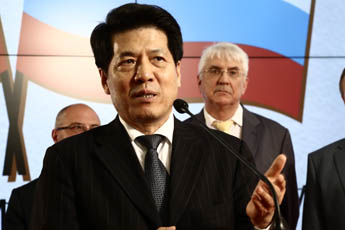
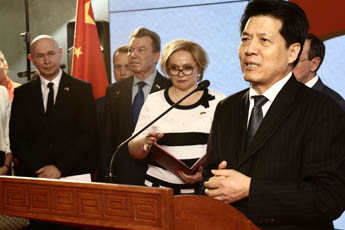 Mr. Li Hui, the Ambassador Extraordinary and Plenipotentiary of the People’s Republic of China to the Russian Federation
Mr. Li Hui, the Ambassador Extraordinary and Plenipotentiary of the People’s Republic of China to the Russian Federation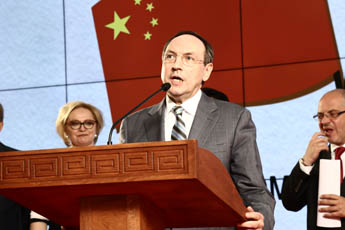 Vyacheslav Nikonov, Chairman of the State Duma Committee for Education and Science
Vyacheslav Nikonov, Chairman of the State Duma Committee for Education and Science 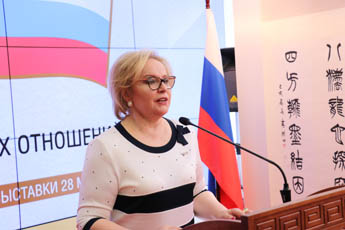 Lyubov Dukhanina, Deputy Chairman of the State Duma Committee for Education and Science
Lyubov Dukhanina, Deputy Chairman of the State Duma Committee for Education and Science 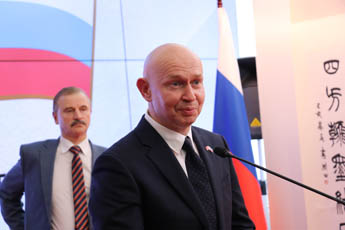 Alexey Shaburov, organizer of the exhibition and Director of the Contemporary Museum of Calligraphy
Alexey Shaburov, organizer of the exhibition and Director of the Contemporary Museum of Calligraphy 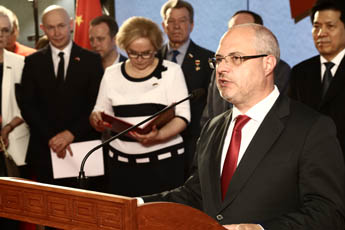 Sergey Gavrilov, Chairman of the State Duma Committee for Society Development, Non-Governmental and Religious Associations
Sergey Gavrilov, Chairman of the State Duma Committee for Society Development, Non-Governmental and Religious Associations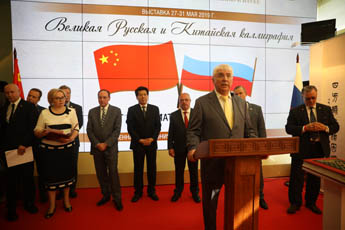 Alexey Chepa, Deputy Chairman of the State Duma Committee for International Affairs and coordinator of the deputy group for Chinese Parliament
Alexey Chepa, Deputy Chairman of the State Duma Committee for International Affairs and coordinator of the deputy group for Chinese Parliament 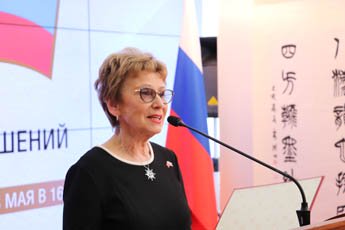 Valentina Orlova, Chairman of the Board of the World Club of Saint Petersburgers
Valentina Orlova, Chairman of the Board of the World Club of Saint Petersburgers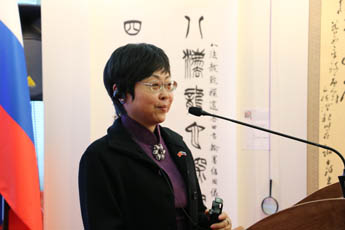 Ms. Jing Ying, the Deputy Chief Officer of the Foreign Affairs Office of Shanghai government
Ms. Jing Ying, the Deputy Chief Officer of the Foreign Affairs Office of Shanghai government 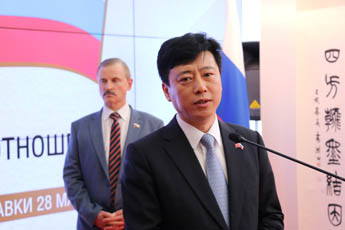 Li Bing, Association Deputy Chairman of the Chinese Sharp-pointed Nib Association
Li Bing, Association Deputy Chairman of the Chinese Sharp-pointed Nib Association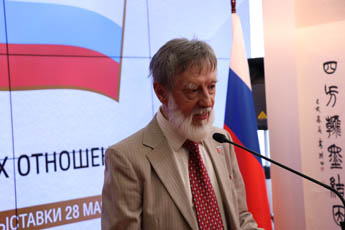 Petr Chobitko, calligraphy artist, President of the National Union of Calligraphers, member of the Union of Artists of Russia
Petr Chobitko, calligraphy artist, President of the National Union of Calligraphers, member of the Union of Artists of Russia 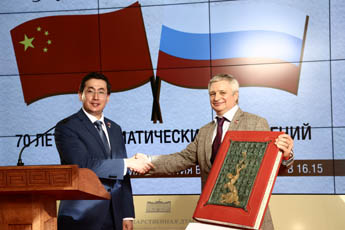 Zhandos Boldykov, Director of the National Centre for Manuscripts and Rare Books, and Petr Suspitsin, General Director of the Rare Book from Saint Petersburg publishing house
Zhandos Boldykov, Director of the National Centre for Manuscripts and Rare Books, and Petr Suspitsin, General Director of the Rare Book from Saint Petersburg publishing house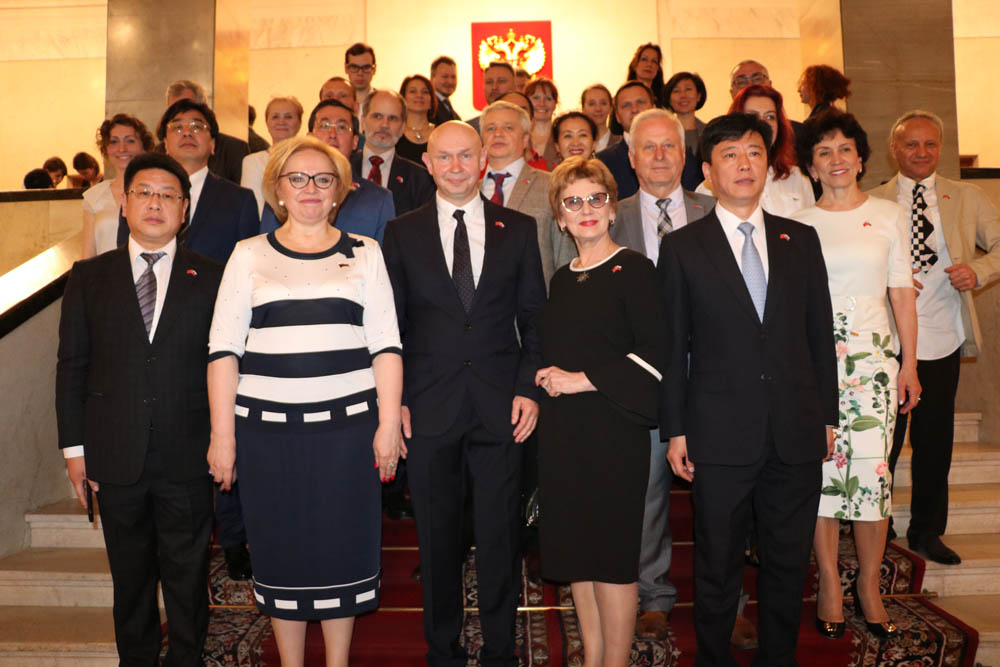 Great Russian and Chinese Calligraphy exhibition opens in State Duma
Great Russian and Chinese Calligraphy exhibition opens in State DumaCalligraphy is a remedy and mental gymnastics.
